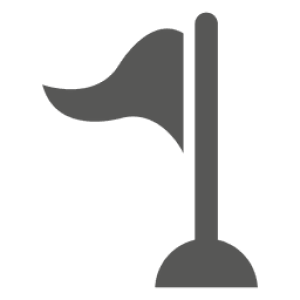Seven things beginners should look for when buying a driver

12/14/2024 06:00 AM
There is a lot to take in when you are starting out in the game. One thing that is worth focusing on is getting your driver right.
The modern-day driver will fill you with lots of confidence, has the biggest clubhead and will obviously get you further down the fairway.
Today’s drivers are highly forgiving and are built to really help the beginner.
When you go to the range the chances are that you will want to hit the driver more than any other club so here are some of the key things to look for to help make the game easier when you are starting out.
1) The buzz word is forgiveness. This means that for all those off-centre hits the club will help you. You will see the term MOI (Moment of Intertia) which is the measure of the clubhead’s resistance to twisting when it hits the ball, especially on off-centre strikes. The higher the MOI, the more forgiveness.
More weight is distributed around the perimeter of the clubhead and this increases the MOI. Also larger clubheads, the limit is a 460cc volume, often have higher MOI. So you want the largest possible clubhead size and you want to steer clear of anything like a mini driver where the clubhead is smaller.
2) More loft. When you see the likes of Rory McIlroy with a loft of 8.25˚ that does not mean that you want a driver with a similar loft. The pros have the clubhead speed and swings to launch the ball, the beginner needs as much help as possible. More loft does not mean that you are going to sky the ball, more loft will reduce the side spin – so the ball going left or right – and you want to look for a driver with around 12˚ of loft.
3) Again, pay no attention to the shaft of the tour pros. You want a lightweight graphite shaft as this will help to increase your swing speed. A generalisation is to look for a regular flex or even a senior flex as slower swing speeds need more flex to optimise distance. If you were to get fitted for one club when you are starting out then the driver would be a good start but something off the shelf, with the right shaft, should be perfectly adequate for when you are getting going.
4) Try before you buy. The game-improvement driver will generally be set up to offset a slice which is the most common miss. A draw-bias driver is designed to adjust the club’s weight distribution and face angle. The centre of gravity is shifted towards the heel of the club which makes it easier to close the clubface during the swing, reducing the open face at impact that causes the slice.
5) Don’t worry yet about adjustability. As you improve you will discover what sort of shot shape that will most benefit you. For now you want to get the ball in the air and going straight. Focus on the technology that will most help you – e.g. a bigger head with some draw bias – first.
6) Look for a pear-shaped head that should be more confidence-inspiring at address. The beginner-type driver should be set up to help you want to hit it. Again, try the club as, even for the novice golfer, looks and sound will affect your perception of the club.
7) As your golf improves then you will want to update your equipment. Look for affordable or older models from leading brands like Callaway, TaylorMade, Ping, Cobra or Titleist to begin with.
Shop Affordable Golf here
Shop Callaway Preowned here
READ MORE:On a budget? 5 websites to buy quality pre-owned golf clubs
The post Seven things beginners should look for when buying a driver appeared first on Golf365.


